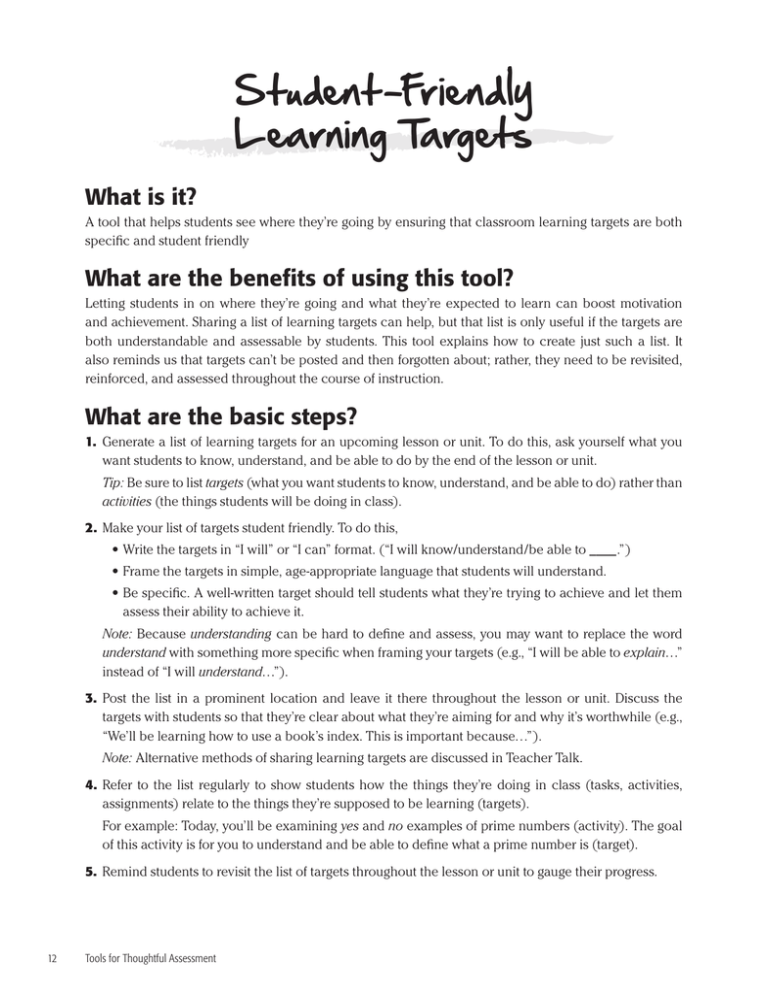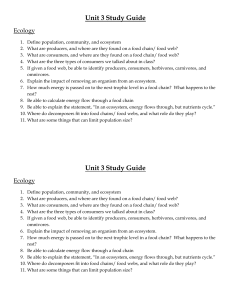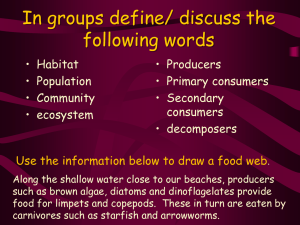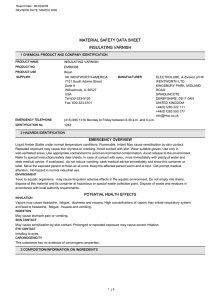Student-Friendly Learning Targets: A Teacher's Guide
advertisement

Student-Friendly Learning Targets What is it? A tool that helps students see where they’re going by ensuring that classroom learning targets are both specific and student friendly What are the benefits of using this tool? Letting students in on where they’re going and what they’re expected to learn can boost motivation and achievement. Sharing a list of learning targets can help, but that list is only useful if the targets are both understandable and assessable by students. This tool explains how to create just such a list. It also reminds us that targets can’t be posted and then forgotten about; rather, they need to be revisited, reinforced, and assessed throughout the course of instruction. What are the basic steps? 1. Generate a list of learning targets for an upcoming lesson or unit. To do this, ask yourself what you want students to know, understand, and be able to do by the end of the lesson or unit. Tip: Be sure to list targets (what you want students to know, understand, and be able to do) rather than activities (the things students will be doing in class). 2.Make your list of targets student friendly. To do this, •Write the targets in “I will” or “I can” format. (“I will know/understand/be able to ____.”) •Frame the targets in simple, age-appropriate language that students will understand. •Be specific. A well-written target should tell students what they’re trying to achieve and let them assess their ability to achieve it. Note: Because understanding can be hard to define and assess, you may want to replace the word understand with something more specific when framing your targets (e.g., “I will be able to explain…” instead of “I will understand…”). 3. Post the list in a prominent location and leave it there throughout the lesson or unit. Discuss the targets with students so that they’re clear about what they’re aiming for and why it’s worthwhile (e.g., “We’ll be learning how to use a book’s index. This is important because…”). Note: Alternative methods of sharing learning targets are discussed in Teacher Talk. 4.Refer to the list regularly to show students how the things they’re doing in class (tasks, activities, assignments) relate to the things they’re supposed to be learning (targets). For example: Today, you’ll be examining yes and no examples of prime numbers (activity). The goal of this activity is for you to understand and be able to define what a prime number is (target). 5. Remind students to revisit the list of targets throughout the lesson or unit to gauge their progress. 12 Tools for Thoughtful Assessment How is this tool used in the classroom? ✔✔ To make students aware of the intended learning targets ✔✔ To enable students to assess and monitor their learning EXAMPLE: A state science standard transformed into a list of student-friendly learning targets Standard that I intend to address: 4-5 LS2C: Plants and animals are related in food webs with producers (plants that make their own food), consumers (animals that eat producers and/or other animals), and decomposers (primarily bacteria and fungi) that break down wastes and dead organisms, and return nutrients to the soil.* Student-friendly learning targets • I will be able to define the following terms in my own words and give an example of each: food web, producer, consumer, decomposer, ecosystem, population, organism. • I will be able to compare and contrast the roles of producers, consumers, and decomposers. • I will know what a food web is, what it illustrates, and how to create one of my own. • I will be able to explain and give specific examples of how plants and animals in an ecosystem depend on one another for survival. • I will be able to predict how a change in the population of one organism might affect the population of other organisms in the same ecosystem. *Washington State K–12 Science Learning Standards, Version 1.2: http://www.k12.wa.us/science/pubdocs/WASciencestandards.pdf Teacher Talk ÎÎWhen you describe classroom learning targets using everyday language, you make those targets accessible to parents as well as students. This, in turn, prepares parents to better support their children’s learning efforts. ÎÎPrimary-grade teachers can make their targets even more student friendly by expressing them using pictures as well as words. Here’s an example: I can liste n quie tly whe n othe rs are talking. ÎÎLearning targets are often introduced at the start of a lesson or unit to guide the learning process, but they can be shared at other points in an instructional sequence as well—and in a number of different ways. Instead of telling students the targets, for example, you could invite them to uncover the targets for themselves by having them analyze a culminating assessment task (“What will you need to know and be able to do in order to complete this task successfully?”) or complete an activity (“What did we learn by creating a plot of temperature vs. elevation?”). And instead of simply posting targets on the board, you could use an engaging “hook” or activity to concretize and give context to the targets. (“What’s the difference between the subtraction problems we learned to solve yesterday and the new ones on the board? Today, we’re going to learn how to use a technique called ‘borrowing’ to tackle these new problems.”) Ultimately, the time and method that you use to share your targets should be determined by the content and purpose of your lesson. Regardless of how and when you share your targets, students should be able to explain what they’re supposed to be learning long before that learning is assessed. Check their ability to do this by posing questions like these: “Why are we doing this?” or “What’s our goal?” Chapter 1 | How Will I Identify and Communicate Learning Goals to Students? 13


